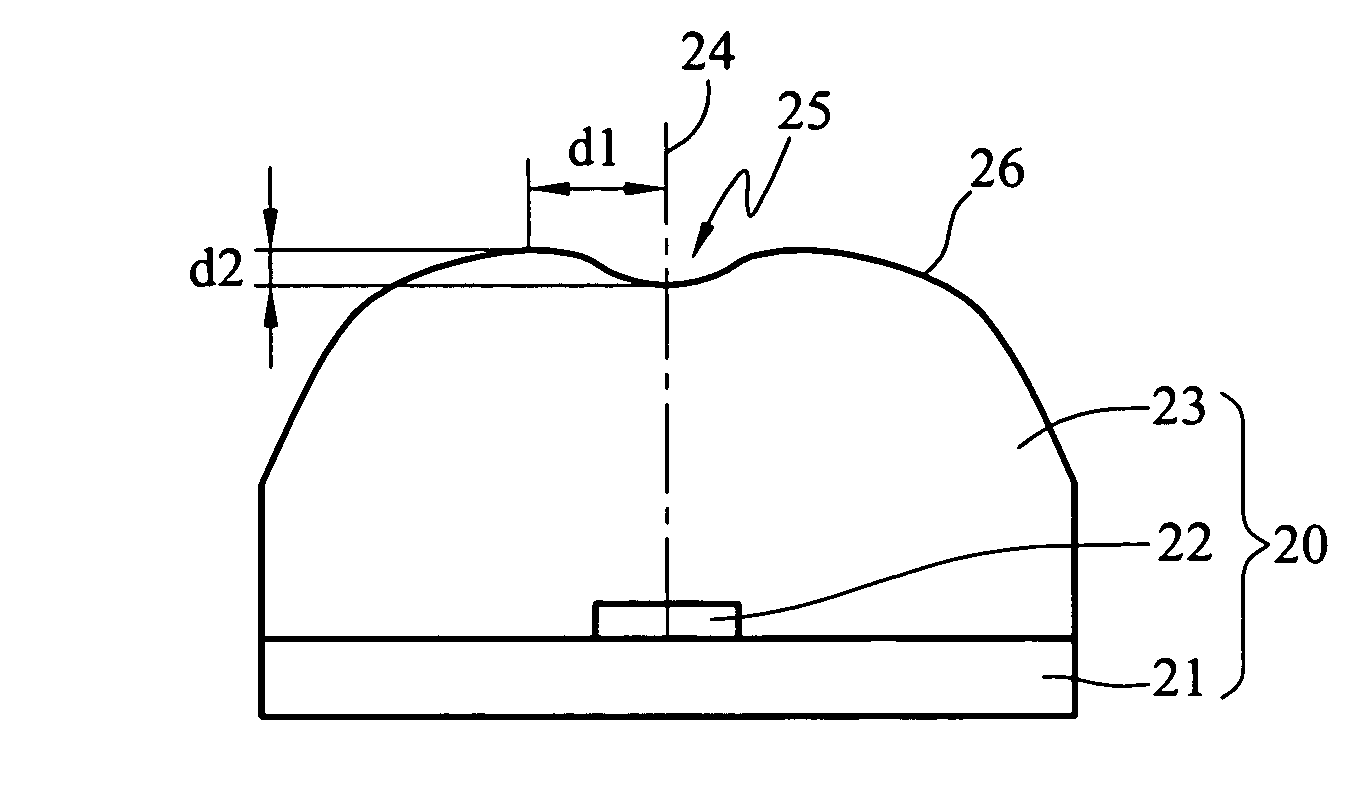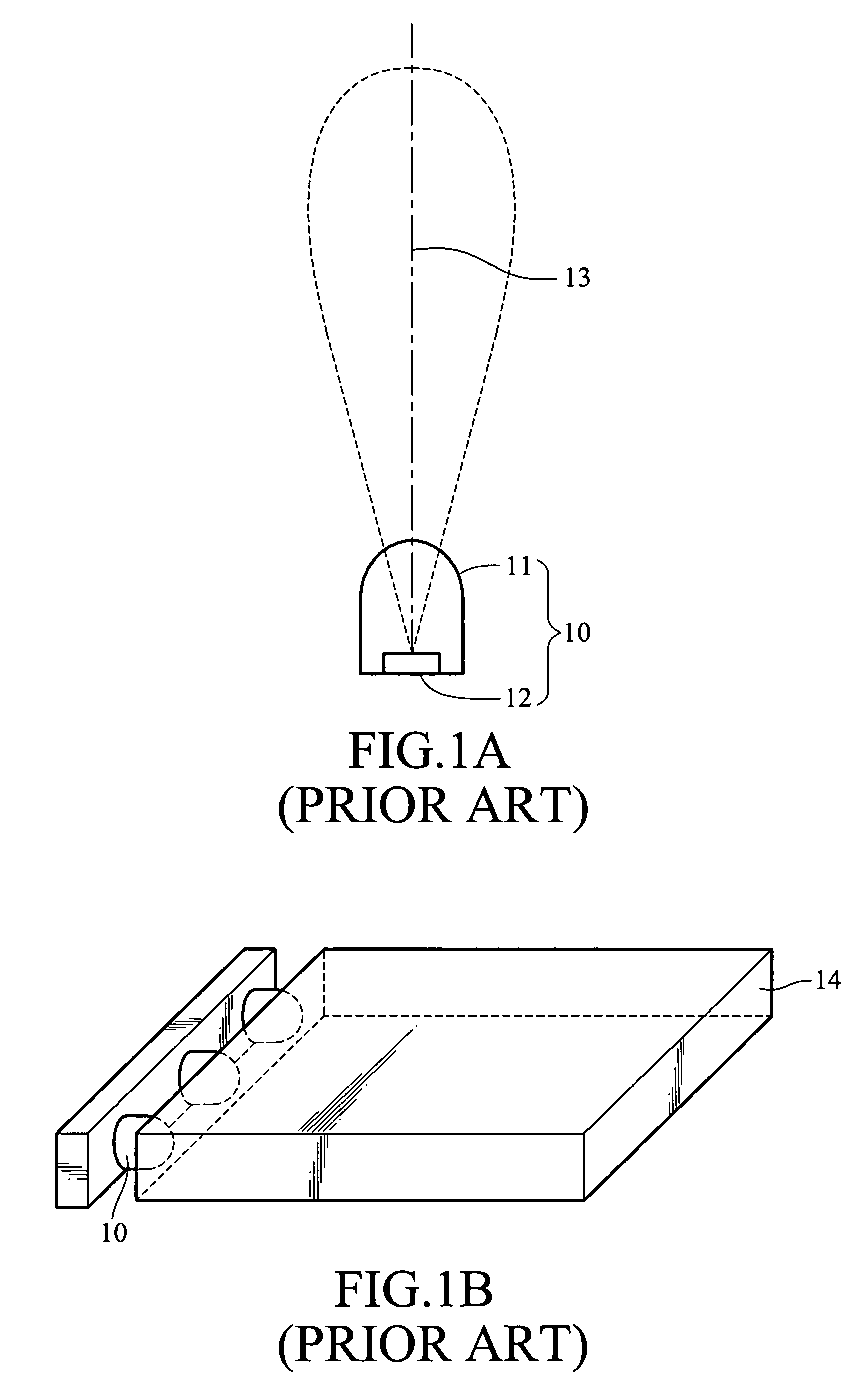Lens and LED using the lens to achieve homogeneous illumination
a technology of led and lens, applied in the field of led with homogeneous illumination, can solve the problem of insufficient optical energy transmitted to the central part by virtue of total reflection
- Summary
- Abstract
- Description
- Claims
- Application Information
AI Technical Summary
Benefits of technology
Problems solved by technology
Method used
Image
Examples
first embodiment
[0023]In observation of the fact that the conventional LED usually has stronger light intensity around its optical axis, the disclosed lens and the LED using the disclosed lens diverge light in the vicinity of the optical axis. the invention is shown in FIGS. 2 and 3. It contains a substrate 21, an LED chip 22, and a lens 23. The LED chip 22 is installed on the substrate 21 and has an optical axis 24. The lens 23 is connected to the substrate 21 by packaging to cover the LED chip 22. On the surface of the lens 23 and in the vicinity of the optical axis 24 is formed with a concave part as a divergent surface 25. The divergent surface 25 is surrounded by a convergent surface 26 with the optical axis 24 as a center. The divergent surface 25 is recessed towards the optical axis 24. The height difference from the divergent surface 25 to the bottom of the LED chip 22 increases from the optical axis outwards. The height difference from the convergent surface 26 to the bottom of the LED chi...
second embodiment
[0031]On the other hand, the invention is shown in FIG. 5. The lens 30 is designed to be a mask. Its surface also has a divergent surface 32 and a convergent surface 33. Its bottom has a concave part 31 that is greater than the LED chip 22. When the lens 30 is connected to the substrate 21, the concave part 31 covers the LED chip 22. A large-area homogeneous light-emitting area is also obtained.
third embodiment
[0032]the invention is shown in FIG. 6. The concave part 31 is designed according to the shape of the LED 10 so that it can be directly combined with a conventional LED 10. This design is more convenient in use. However, the light-emitting efficiency is slightly lower due to the extra deflection.
PUM
 Login to View More
Login to View More Abstract
Description
Claims
Application Information
 Login to View More
Login to View More - R&D
- Intellectual Property
- Life Sciences
- Materials
- Tech Scout
- Unparalleled Data Quality
- Higher Quality Content
- 60% Fewer Hallucinations
Browse by: Latest US Patents, China's latest patents, Technical Efficacy Thesaurus, Application Domain, Technology Topic, Popular Technical Reports.
© 2025 PatSnap. All rights reserved.Legal|Privacy policy|Modern Slavery Act Transparency Statement|Sitemap|About US| Contact US: help@patsnap.com



